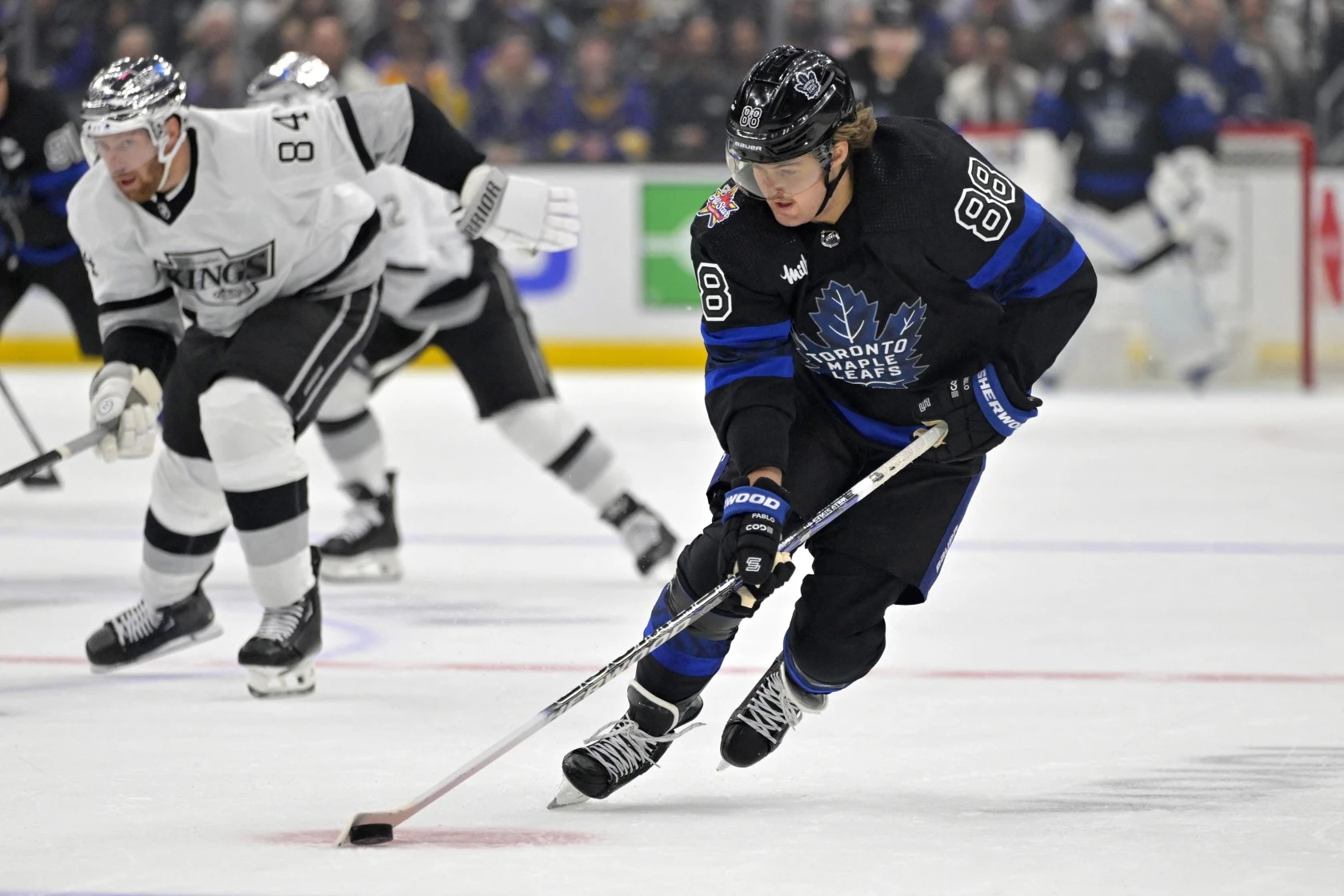As of Saturday night, Elliotte Friedman has reported terms of $11.5 million AAV over an eight-year contract extension for William Nylander, with an announcement to arrive as early as Monday.
If the reported numbers are accurate (and there is too much smoke from credible sources for it not to be close to the final number), it would place Nylander in the top five in the NHL in terms of raw cap hit in 2024-25 as of today, tied with Erik Karlsson and just above David Pastrnak’s $11.25 million AAV.
In terms of cap hit percentage at the time of signing, $11.5 million would represent 13.1% of next year’s cap, which slots him at a more reasonable ninth among NHL forwards, just below Jack Eichel’s 13.3% and Mitch Marner’s 13.4% (again, all calculated at the time of signing their respective contracts).
Nylander’s raise from $6.9 million to ~$11.5 million alone would take up more than the $4.2 million increase in the cap for 2024-25, and of course, Auston Matthews’ $1.65 million raise is also set to kick in on July 1, 2024. Filling out the roster is going to be extra tight next year until the flexibility opens up from John Tavares’ contract leaving the books after 2024-25, assuming all of the big five are all returning.
Unfortunately, the hard-cap reality of the league forces us to compartmentalize our feelings on the player vs. the contract, so I’ll say this about the player before I get into a critical take on the reported contractual terms: On one hand, it is always nice to see a homegrown star talent like William Nylander sign on the dotted line with the Maple Leafs for the remainder of his prime. He’s a sublime talent who will be a joy to watch for the foreseeable future. His personality is uniquely equipped to handle the heightened pressure this kind of (overpaid) contract naturally engenders in a market such as Toronto, and his style of play/natural athleticism/commitment to fitness would appear to stand the 27-year-old (28 in May) in good stead for traversing the age curve gracefully into his 30s.
How did we ever get into the $11.5 million range with William Nylander’s new contract?
Now, viewing the contract critically, the argument, “as long as this 37-game sample is indicative of who he is for the next five-plus years (vs. how he’s played the entire previous portion of his career), it’ll be an okay enough deal!” is not at all a convincing one for me. Brad Treliving didn’t get this done in the summer at whatever the number on the table was at the time and then he jumped to get it done at a significant markup after the best half-season of Nylander’s career by far (21 goals, 54 points in 37 games).
Feasibly, if the sides are at $11.5 million already by January, there was not much room for it to go much higher even in an open-market scenario, let alone in negotiations with one team who can offer the eighth year. Another team in the UFA market would have to offer $12.5 million-plus over seven years to guarantee the earnings Nylander is going to make in eight years in Toronto. I cannot see another team offering Nylander this amount even in the bustle of an open-market bidding war. It’s impossible to ignore the reality that the Leafs paid through the teeth here.
At this point, slow playing it until closer to the trade deadline — but certainly not waiting until after the deadline to make a final decision— and seeing if Nylander cools off at all while feeling out the trade market on possible hockey deals for impact defensemen is kind of a “may as well” scenario that would’ve allowed the 2023-24 sample size to grow and for Treliving to perform the full due diligence on the sign vs. trade calculus. You could argue the inevitable leaks about Nylander’s name being floated out there on the trade market would have had the potential to torpedo negotiations in a market like Toronto, but if one side is driving a really hard bargain like this with an “it’s just business” mindset, this should go both ways.
We might’ve ended up essentially in the same place anyway, but as it is, this feels a bit like the worst of both worlds where Treliving didn’t get out ahead of it and then he paid through the nose after a red-hot 37 games, giving the player everything he conceivably could’ve asked for. It reads to me like the work of a GM who has a track record of losing star talent for free playing it cool in the summer but getting a really itchy finger once the points started piling up and the leverage grew on the other side of the negotiation (which brings about some legitimate questions as to whether he is the best man to handle these third contracts with Marner, Matthews, and Nylander).
Even adjusting for a $87.5 million cap limit, signing Nylander to Pastrnak’s contract or slightly more (!), or giving him $1.5+ million more than Sebastian Aho, obviously doesn’t add up when you look at the comparables. It is indisputable at this point that the Leafs are continually placing themselves at a competitive disadvantage based on the premium they pay to retain their star talent relative to the competition.
Now, partly in Treliving’s defense, he inherited a doozy of a situation due to the existing contractual politics and precedents in Toronto. I really don’t think there was a chance in hell William Nylander’s camp ever would’ve been content with their third contract — which sells all of his remaining prime UFA seasons — coming in at or under Mitch Marner’s $10.903 million AAV, a deal Marner signed as his second contract as an RFA (obviously, a clear overpayment at the time based on all the comparables). Even at an $11.5 million AAV, Nylander is still technically coming in under Marner’s cap hit percentage at the time Marner’s second contract came into effect.
Even while acknowledging Nylander is enjoying a career year and Marner is playing below the expected standard so far in 2023-24, the gap certainly isn’t big enough between the two players for this to make any sense, and I can see how it would be a lot to ask for/convince Nylander’s camp of for Nylander to be the first to bite the bullet on resetting the table, so to speak. The genie has been out of the bottle since the Marner contract.
All of that said, just as Nylander got the raw end of the deal coming due before Marner and Matthews during the second contract negotiations, the flip side is that I don’t think Nylander was the best one for the Leafs to finally draw a line in the sand with in regards to these overpayments on the third contracts (neither was Matthews, clearly, as he is in a category of his own — i.e. blank cheque territory). To lose Nylander would’ve set them up terribly for the big Marner negotiation starting this upcoming summer, and I don’t think Nylander carries the same trade value as Marner, either (on that note, though, it’s worth remembering that Kyle Dubas gave Marner an NMC in the final two years of his contract).
At least it’s nearly over with, and the worst-case scenarios of Nylander walking for free or getting traded for pennies on the dollar have been eliminated, at a minimum.















![John Gruden after the Leafs prospects’ 4-1 win over Montreal: “[Vyacheslav Peksa] looked really comfortable in the net… We wouldn’t have won without him” John Gruden, head coach of the Toronto Marlies](https://mapleleafshotstove.com/wp-content/uploads/2025/09/gruden-post-game-sep-14-218x150.jpg)


















